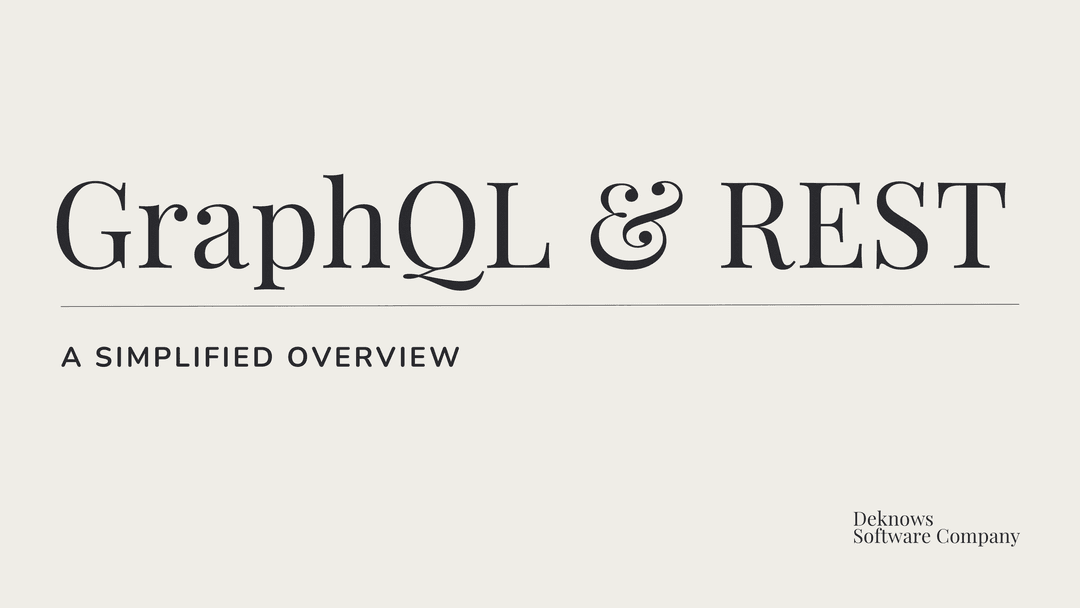GraphQL vs. REST: A Simplified Overview
Read time: 9 minutes
Hamad K
Aug 12, Mon

GraphQL and REST are two popular technologies used to exchange data over the internet. While both serve a similar purpose, they have distinct characteristics and use cases,
What Are They?
REST (Representational State Transfer): This is a standard method for client applications to communicate with servers using HTTP methods like GET, POST, PUT, and DELETE. It focuses on resources, where each resource is identified by a URL.
GraphQL: Developed by Facebook in 2012, GraphQL is an API query language that allows clients to request exactly the data they need in a single query. It simplifies data retrieval by letting you ask for just the data you need, rather than fetching entire datasets.
Similarities:
- Data Exchange: Both GraphQL and REST are used to exchange data between clients and servers.
- Client-Server Model: They operate on a client-server model where the client sends requests and the server responds with data.
- Stateless Communication: Neither keeps track of previous requests. Each request is independent.
- HTTP-Based: Both use HTTP as the communication protocol.
- Data Formats: They commonly use JSON for data interchange, though other formats like XML are also supported.
- Caching: Both support caching to improve performance and reduce the load on servers.
Key Differences
Data Retrieval:
- REST: Retrieves entire datasets, which might include unnecessary data.
- GraphQL: Allows clients to request only the data they need, reducing over-fetching and under-fetching issues.
Request Methods:
- REST: Uses HTTP methods (GET, POST, PUT, DELETE) to perform operations.
- GraphQL: Uses queries for fetching data, mutations for modifying data, and subscriptions for real-time updates.
Schema:
- REST: Does not require a server-side schema, but it can be optional.
- GraphQL: Requires a schema to define the data structure and available operations, making it easier to manage and understand.
Versioning:
- REST: Often involves versioning (e.g.,
/api/v1/resource) which can lead to maintenance challenges. - GraphQL: Avoids versioning by maintaining backward compatibility; deprecated fields are flagged as warnings.
- REST: Often involves versioning (e.g.,
Type Safety:
- REST: Weakly typed, meaning errors might not be detected until runtime.
- GraphQL: Strongly typed, allowing for better error handling and validation at the schema level.
When to Use Each
Use GraphQL (if)
- You need to minimize the number of requests.
- You have multiple data sources that need to be combined.
- Your client requests vary significantly in terms of data requirements.
Use REST (if)
- You’re working with simpler applications and data.
- The data and operations are used uniformly across clients.
- You don’t need complex querying capabilities.
In some cases, combining both GraphQL and REST within the same application can be beneficial, leveraging the strengths of each where they fit best.
Interested in Publishing your knowledge and sharing it with the world?


We thrive by partering with visionary brands and driven individuals.
Say hello 👋